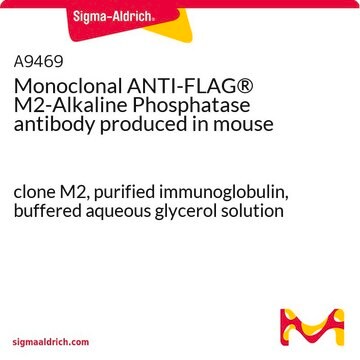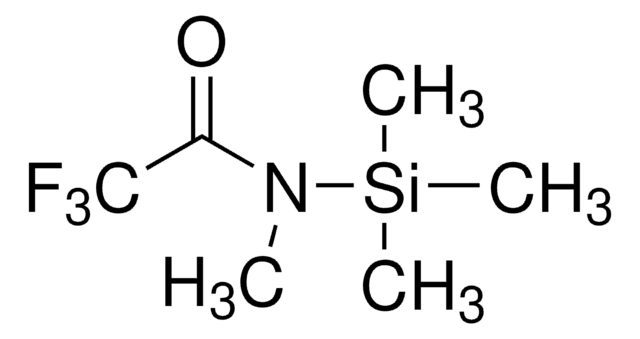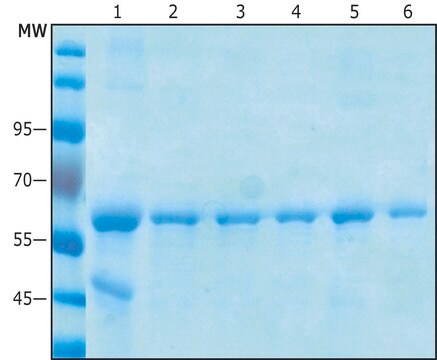A5963
Anti-c-Myc
clone 9E10, purified from hybridoma cell culture
Sinónimos:
Anti-c-Myc, Monoclonal Anti-c-Myc−Alkaline Phosphatase antibody produced in mouse
About This Item
Productos recomendados
biological source
mouse
conjugate
alkaline phosphatase conjugate
antibody form
purified immunoglobulin
antibody product type
primary antibodies
clone
9E10, monoclonal
form
buffered aqueous glycerol solution
species reactivity
human
technique(s)
ELISA: suitable
immunohistochemistry (formalin-fixed, paraffin-embedded sections): suitable
western blot: 1:100 using a myc-tagged fusion protein.
isotype
IgG1
UniProt accession no.
storage temp.
2-8°C
target post-translational modification
unmodified
Gene Information
human ... MYC(4609)
¿Está buscando productos similares? Visita Guía de comparación de productos
Categorías relacionadas
General description
Immunogen
Application
- enzyme linked immunosorbent assay (ELISA)
- immunohistochemical labeling
- immunostaining
- western blotting
Biochem/physiol Actions
Physical form
Disclaimer
¿No encuentra el producto adecuado?
Pruebe nuestro Herramienta de selección de productos.
Storage Class
10 - Combustible liquids
wgk_germany
WGK 2
flash_point_f
Not applicable
flash_point_c
Not applicable
ppe
Eyeshields, Gloves, multi-purpose combination respirator cartridge (US)
Elija entre una de las versiones más recientes:
¿Ya tiene este producto?
Encuentre la documentación para los productos que ha comprado recientemente en la Biblioteca de documentos.
Nuestro equipo de científicos tiene experiencia en todas las áreas de investigación: Ciencias de la vida, Ciencia de los materiales, Síntesis química, Cromatografía, Analítica y muchas otras.
Póngase en contacto con el Servicio técnico








